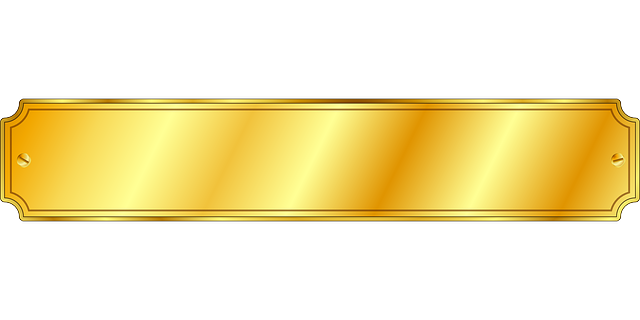401(k) plan holders considering converting their retirement savings into physical gold and silver within an IRA must first confirm their plan's rollover eligibility under ERISA guidelines. This involves checking the plan documents or contacting the plan administrator, as not all plans permit such transfers. If eligible, one should open a self-directed IRA that allows precious metals investments and choose a reputable custodian knowledgeable in IRS-approved precious metals. The custodian will facilitate the purchase of gold, silver, platinum, or palladium within the IRA's framework, ensuring compliance with IRS standards for purity and storage. Throughout this process, it's imperative to handle rollovers carefully, understanding direct and indirect rollover types and their tax implications to avoid penalties or additional taxes. A financial advisor or specialized precious metals dealer with experience in IRA-approved investments should be consulted to ensure a smooth transition and adherence to all regulations. Legal and financial planning is essential for the conversion, considering market volatility and insurance for physical assets. The process requires careful consideration of tax implications, storage solutions, and a strategic approach to maintain the tax-advantaged status of your retirement savings.
Exploring the transformation of a traditional 401(k) into a diversified portfolio featuring gold and silver can be a strategic financial move. This article outlines the critical steps involved in this process, starting with the eligibility of your 401(k) plan for rollovers. Whether you’re transitioning after job change or leveraging in-service withdrawal options, understanding the intricacies of rolling over your funds to precious metals is paramount. We delve into the specifics, from selecting a reputable IRA custodian specializing in these assets to navigating the legal and financial nuances of transfer completion. Once executed, managing your gold and silver IRA paves the way for a unique addition to your retirement portfolio. Join us as we guide you through this alternative investment pathway, ensuring you’re well-informed at every step.
- Understanding Rollover Eligibility for 401(k) Plans
- Steps to Initiate a 401(k) to Gold and Silver Rollover
- Selecting a Trusted Precious Metals IRA Custodian
- Completing the Transfer: Legal and Financial Considerations
- Managing Your New Gold and Silver I
Understanding Rollover Eligibility for 401(k) Plans

401(k) rollover eligibility is a critical aspect to consider when contemplating a conversion of retirement savings into physical gold and silver. Not all 401(k) plans permit rollovers; thus, it’s imperative to review the plan documents or consult with the plan administrator to confirm this eligibility. The Employee Retirement Income Security Act (ERISA) sets guidelines for plan administrators, and they can establish rules that either allow or restrict rollovers. Once you ascertain that your plan supports rollovers, you can proceed with the process upon leaving your job or if your plan specifically offers in-service withdrawals—a feature that allows you to rollover funds without waiting for retirement or a job change. This option provides flexibility and the potential to diversify your retirement savings by investing in precious metals, which can offer a hedge against inflation and market volatility. It’s advisable to manage this transition with care, as it involves understanding the types of rollovers available—direct and indirect—and the associated tax implications, ensuring compliance with IRS regulations to avoid penalties or unnecessary taxes. Consulting with a financial advisor or a trusted precious metals dealer who specializes in IRA-approved investments can provide guidance throughout this process.
Steps to Initiate a 401(k) to Gold and Silver Rollover

When considering the conversion of your 401(k) into physical gold and silver, it’s crucial to initiate the process with careful planning and adherence to IRS regulations. The first step involves confirming the eligibility of your 401(k) plan for a rollover. Not all plans permit this, so review your plan documents or consult with your plan administrator to understand the rules. If your plan allows for rollovers and you’re no longer employed with the company sponsoring the 401(k), you can initiate the rollover by transferring the funds to a self-directed IRA that permits investments in precious metals.
Once you have an eligible self-directed IRA, locate a reputable custodian experienced in handling precious metals within IRAs. The custodian will guide you through purchasing IRS-approved gold, silver, platinum, and palladium. Ensure that the metals are held in an IRS-compliant depository. After acquiring approval from both your IRA custodian and the precious metals dealer, the funds from your 401(k) roll over to purchase the physical metals on your behalf. Throughout this process, it’s imperative to maintain records of all transactions and adhere to IRS rules regarding prohibited transaction avoidance to preserve the tax-advantaged status of your retirement savings.
Selecting a Trusted Precious Metals IRA Custodian

When considering the conversion of your 401(k) to physical gold and silver, selecting a trusted precious metals IRA custodian is paramount. This custodian will be responsible for holding your investments in accordance with IRS regulations, ensuring that your assets are secure and properly managed. It’s essential to research and select a reputable custodian with experience in precious metals. Look for firms with a track record of transparency, compliance, and customer service excellence. The custodian should be well-versed in the specific requirements for IRS-approved precious metals, including purity standards and storage protocols. Additionally, they must have robust security measures to protect your investment against theft, loss, or fraud. By partnering with a reliable custodian, you can navigate the complexities of this alternative investment strategy with confidence, knowing that your retirement savings are being safeguarded and managed in line with the best practices in the industry.
Once you’ve identified a suitable precious metals IRA custodian, the next step is to initiate the rollover process from your 401(k) plan. This involves requesting a direct rollover from your existing plan provider to the new self-directed IRA account set up with your chosen custodian. Ensure all paperwork is completed accurately and in compliance with IRS regulations to avoid any taxable events or penalties. The custodian will guide you through this process, ensuring that the transfer adheres to the rules governing rollovers, which include not taking personal possession of the funds at any point during the transaction. This hands-off approach is crucial for maintaining the tax-advantaged status of your retirement savings.
Completing the Transfer: Legal and Financial Considerations

When considering the conversion of a 401(k) into physical gold and silver, it is imperative to navigate the process with both legal and financial acuity. Legally, one must confirm that their plan allows for rollovers into precious metals accounts, as not all 401(k) plans have this option. The Employee Retirement Income Security Act (ERISA) governs such transactions, and adherence to its guidelines is non-negotiable. This involves rolling over the funds into an Individual Retirement Account (IRA) that specializes in holding physical precious metals before any transfer can occur.
Financially, it is crucial to work with reputable custodians and dealers who are well-versed in the specific regulations surrounding this type of investment. These professionals will guide you through selecting eligible gold, silver, platinum, and palladium products that meet the purity standards set by the Internal Revenue Service (IRS). They will also manage the logistics of transferring funds from your 401(k) or IRA to the precious metals IRA custodian. It is essential to consider the tax implications, storage options, and insurance for the physical assets to ensure the safety and longevity of your investment. Additionally, market conditions should be taken into account, as the value of gold and silver can fluctuate. A well-planned strategy, in concert with professional guidance, will facilitate a smooth transition that aligns with your long-term financial objectives.
Managing Your New Gold and Silver I

When considering the conversion of a 401(k) into physical gold and silver, it’s imperative to first ascertain the rules and regulations governing your specific plan. Not all 401(k) accounts permit rollovers, so a thorough review of your plan documents is necessary. This will determine if you can transfer funds to an Individual Retirement Account (IRA) that specializes in precious metals. Should your plan support such transfers, and if you’ve changed jobs or your current plan allows for in-service withdrawals, you can proceed with the rollover process.
Upon confirming the feasibility of a rollover, the next step is to establish a self-directed IRA that accepts physical gold and silver as investments. You will need to partner with a custodian that is equipped to handle these types of assets. These custodians are familiar with the specific requirements for storing and handling precious metals within an IRA context, including the types of metals that qualify (such as gold, silver, platinum, and palladium in certain forms). Once the new account is set up, you can direct the transfer of funds from your 401(k) to this new IRA. After the rollover is complete, you gain control over investing in physical gold and silver within the confines of your retirement savings, subject to the rules that govern these types of IRAs. It’s crucial to work closely with both a trusted financial advisor and a reputable precious metals dealer to ensure compliance with all IRS regulations and to make informed decisions about your investment in precious metals.
In conclusion, transitioning your 401(k) into physical gold and silver can be a strategic diversification of your retirement portfolio. By understanding rollover eligibility for your plan, meticulously following the steps to initiate the transfer, carefully selecting a reputable precious metals IRA custodian, and addressing all legal and financial considerations, you can successfully manage your new Gold and Silver IRA. It’s crucial to stay informed about the rules and regulations governing such rollovers to ensure compliance and optimize the benefits of this investment strategy. With careful planning and due diligence, your retirement savings can include tangible assets that may offer protection against inflation and economic volatility.
